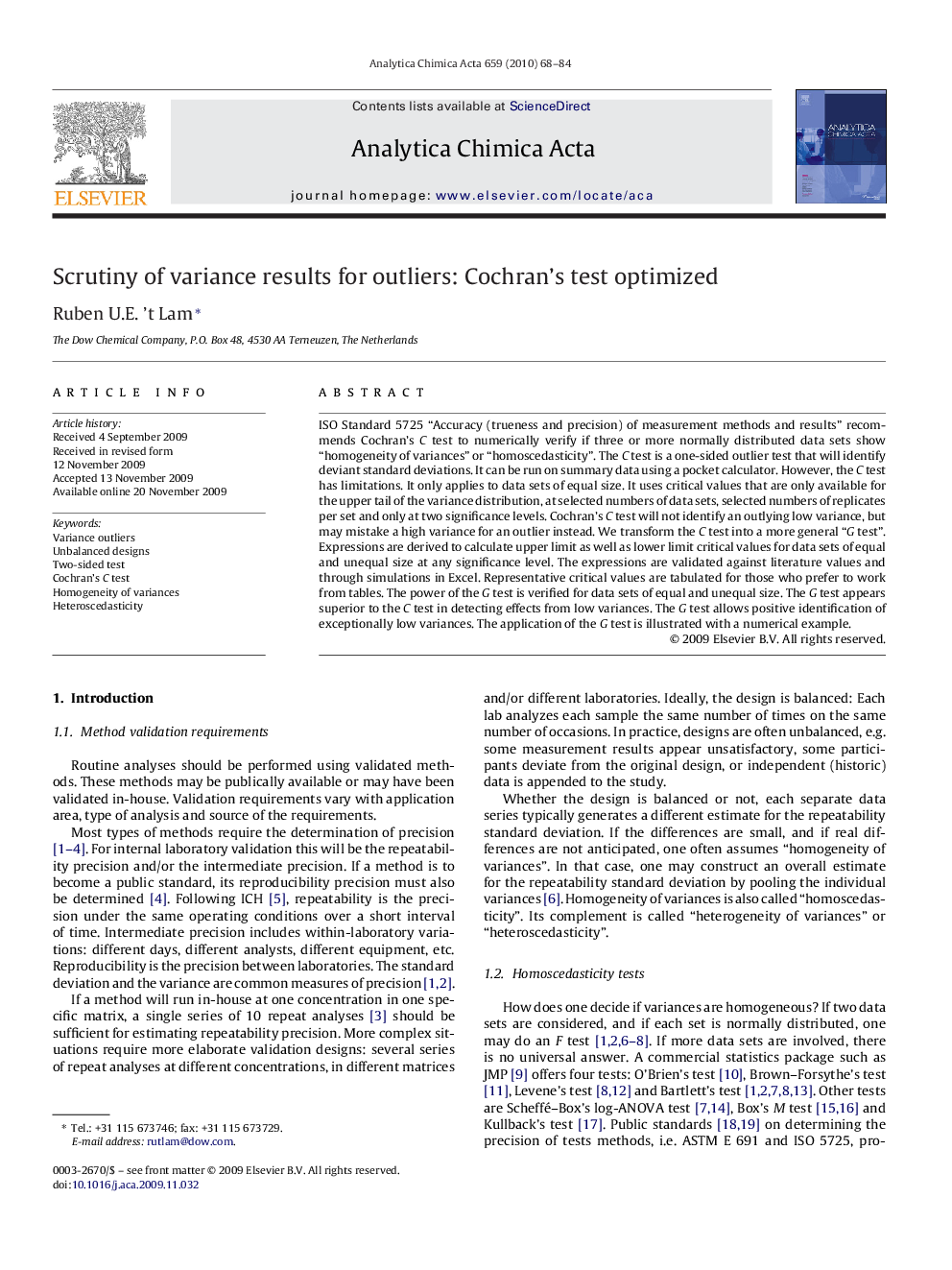| Article ID | Journal | Published Year | Pages | File Type |
|---|---|---|---|---|
| 1167985 | Analytica Chimica Acta | 2010 | 17 Pages |
ISO Standard 5725 “Accuracy (trueness and precision) of measurement methods and results” recommends Cochran's C test to numerically verify if three or more normally distributed data sets show “homogeneity of variances” or “homoscedasticity”. The C test is a one-sided outlier test that will identify deviant standard deviations. It can be run on summary data using a pocket calculator. However, the C test has limitations. It only applies to data sets of equal size. It uses critical values that are only available for the upper tail of the variance distribution, at selected numbers of data sets, selected numbers of replicates per set and only at two significance levels. Cochran's C test will not identify an outlying low variance, but may mistake a high variance for an outlier instead. We transform the C test into a more general “G test”. Expressions are derived to calculate upper limit as well as lower limit critical values for data sets of equal and unequal size at any significance level. The expressions are validated against literature values and through simulations in Excel. Representative critical values are tabulated for those who prefer to work from tables. The power of the G test is verified for data sets of equal and unequal size. The G test appears superior to the C test in detecting effects from low variances. The G test allows positive identification of exceptionally low variances. The application of the G test is illustrated with a numerical example.
